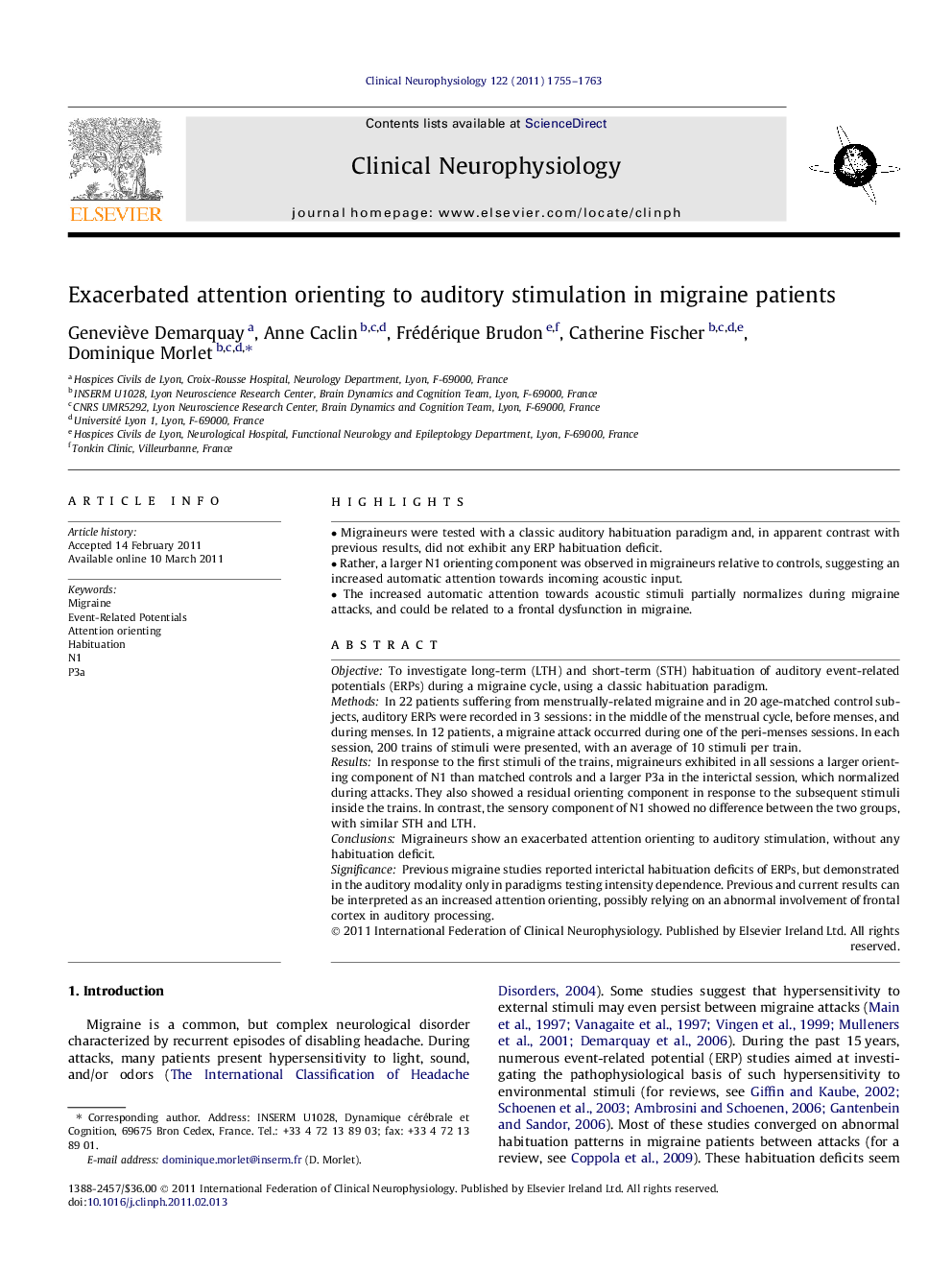| Article ID | Journal | Published Year | Pages | File Type |
|---|---|---|---|---|
| 3045782 | Clinical Neurophysiology | 2011 | 9 Pages |
ObjectiveTo investigate long-term (LTH) and short-term (STH) habituation of auditory event-related potentials (ERPs) during a migraine cycle, using a classic habituation paradigm.MethodsIn 22 patients suffering from menstrually-related migraine and in 20 age-matched control subjects, auditory ERPs were recorded in 3 sessions: in the middle of the menstrual cycle, before menses, and during menses. In 12 patients, a migraine attack occurred during one of the peri-menses sessions. In each session, 200 trains of stimuli were presented, with an average of 10 stimuli per train.ResultsIn response to the first stimuli of the trains, migraineurs exhibited in all sessions a larger orienting component of N1 than matched controls and a larger P3a in the interictal session, which normalized during attacks. They also showed a residual orienting component in response to the subsequent stimuli inside the trains. In contrast, the sensory component of N1 showed no difference between the two groups, with similar STH and LTH.ConclusionsMigraineurs show an exacerbated attention orienting to auditory stimulation, without any habituation deficit.SignificancePrevious migraine studies reported interictal habituation deficits of ERPs, but demonstrated in the auditory modality only in paradigms testing intensity dependence. Previous and current results can be interpreted as an increased attention orienting, possibly relying on an abnormal involvement of frontal cortex in auditory processing.
► Migraineurs were tested with a classic auditory habituation paradigm and, in apparent contrast with previous results, did not exhibit any ERP habituation deficit. ► Rather, a larger N1 orienting component was observed in migraineurs relative to controls, suggesting an increased automatic attention towards incoming acoustic input. ► The increased automatic attention towards acoustic stimuli partially normalizes during migraine attacks, and could be related to a frontal dysfunction in migraine.
